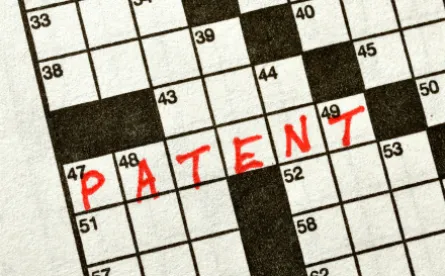Monsanto Tech. LLC v. E.I. Dupont De Nemours & Co.: Jan. 5, 2018. Before Dyk, Reyna, and Wallach.
Takeaway:
- In support of an inherency contention, extrinsic evidence in the form of a declaration submitted by an author/inventor of a prior art reference may be submitted to elucidate the subject matter necessarily described in the reference.
Procedural Posture:
Monsanto appealed a final written decision by the PTAB finding claims of U.S. Patent No. 7,790,953 (the “’953 patent) invalid in view of prior art in an inter partes reexamination. The Federal Circuit affirmed.
Synopsis:
- Claim Construction: The ’953 patent is directed to a process for crossing (mating) two parent soybean lines to produce soybean seeds with a modified fatty profile. The Federal Circuit found that the Board did not err in interpreting a claim term requiring one of the parents to have “about 3% or less” linolenic acid content to be disclosed by a prior art patent (Booth) showing a parent line containing 4% linolenic acid content. The claim language was not instructive as to the meaning of the term, but the specification identified a particular parent line, the C6140 line, as having “a linolenic acid content of about 3%.” The specification further identified an article that described that the C1640 line has a range of linolenic acid content from 2.3% to 4.1%. Therefore, the Federal Circuit found that the Board’s construction of “about 3%” to encompass a range that includes 4% was reasonable in view of the intrinsic evidence.
- Anticipation – Inherency: The Federal Circuit found that the Board’s determination that Booth anticipated the claims of the ’953 patent was supported by substantial evidence. The independent claim requires two steps: a) crossing soybean lines, each parent line having known genetic features, and b) obtaining a progeny plant having seed oil fatty acid composition with low levels of linolenic acid and a specific range of oleic acid levels. Substantial evidence supported the Board’s finding that “Example 8” of Booth disclosed crossing both parent lines as specified by step a. Regarding step b, the mere fact that a table contained within Booth did not explicitly disclose a progeny within the claimed ranges did not foreclose inherency, because Booth described that the table did not represent the full scope of the progeny lines resulting from the cross of the parent lines of Example 8. A declaration submitted by the inventor of Booth (created at the outset of the inter partes reexamination proceeding) provided substantial evidence that the cross of parent lines described in Example 8 would necessarily include the creation of a progeny having the characteristics of step b. The declaration was not itself prior art or relied on as prior art, but it was extrinsic evidence used to ascertain the meaning of the prior art reference. Monsanto did not rebut the declaration with evidence of its own, and the Board’s reliance on such extrinsic evidence was proper in the inherency analysis.





 />i
/>i
